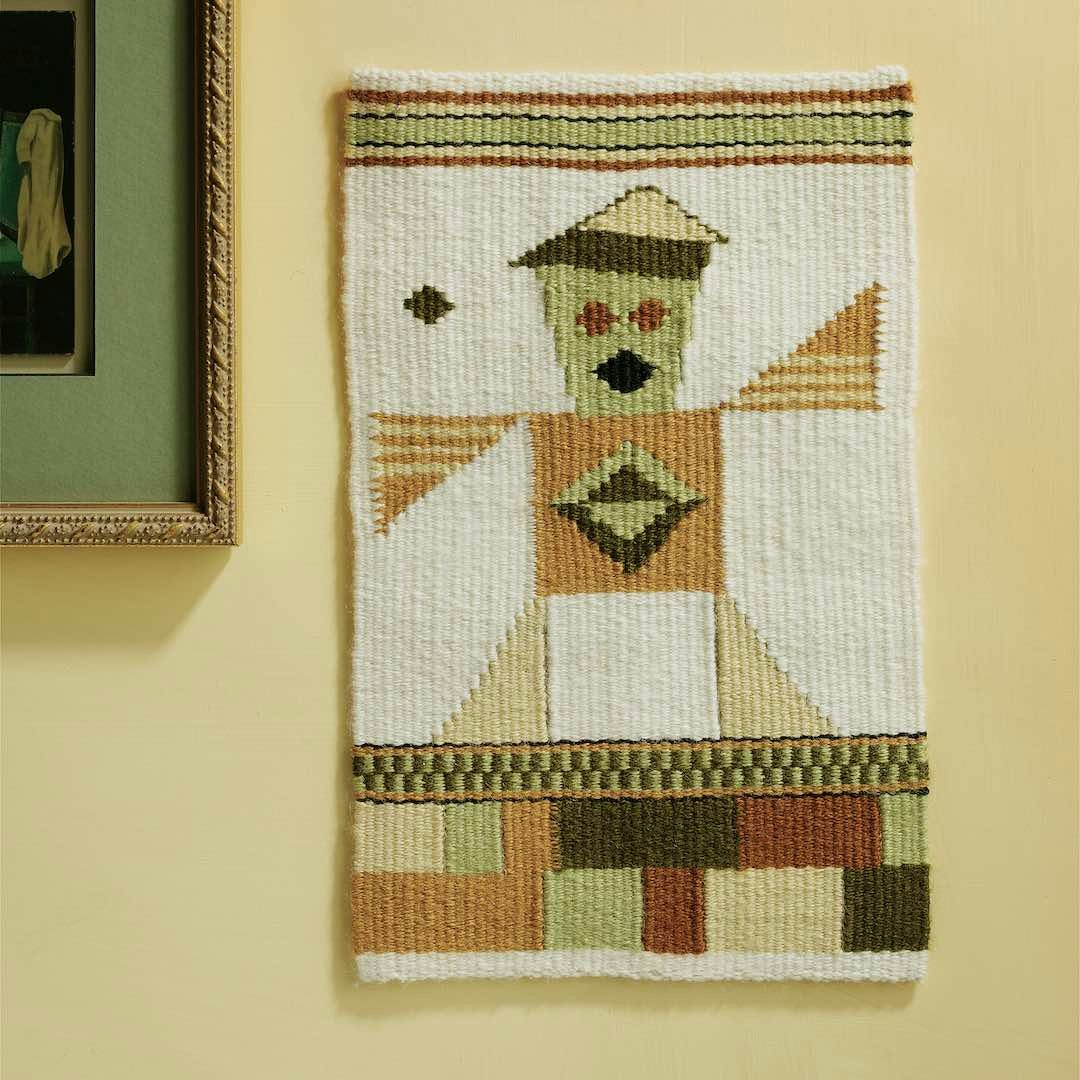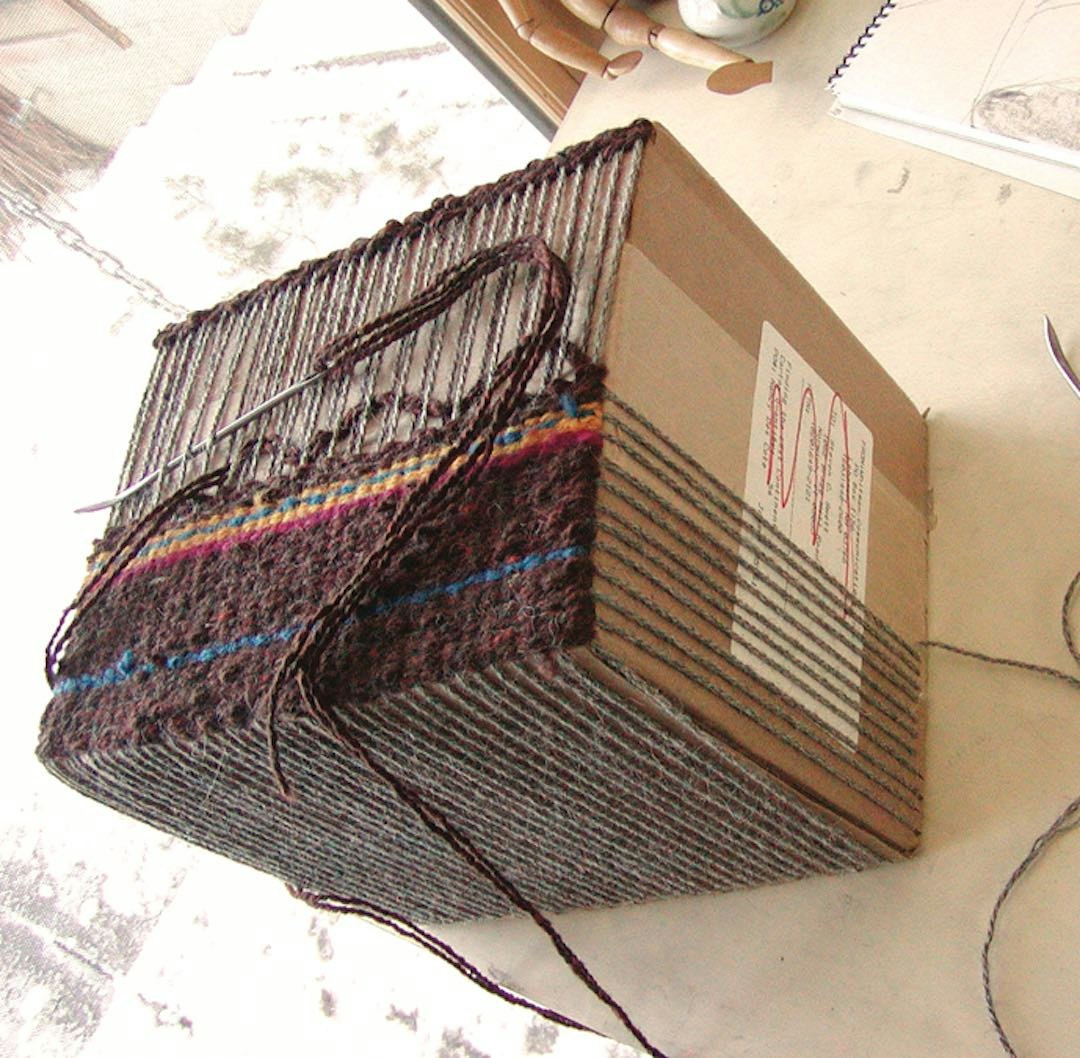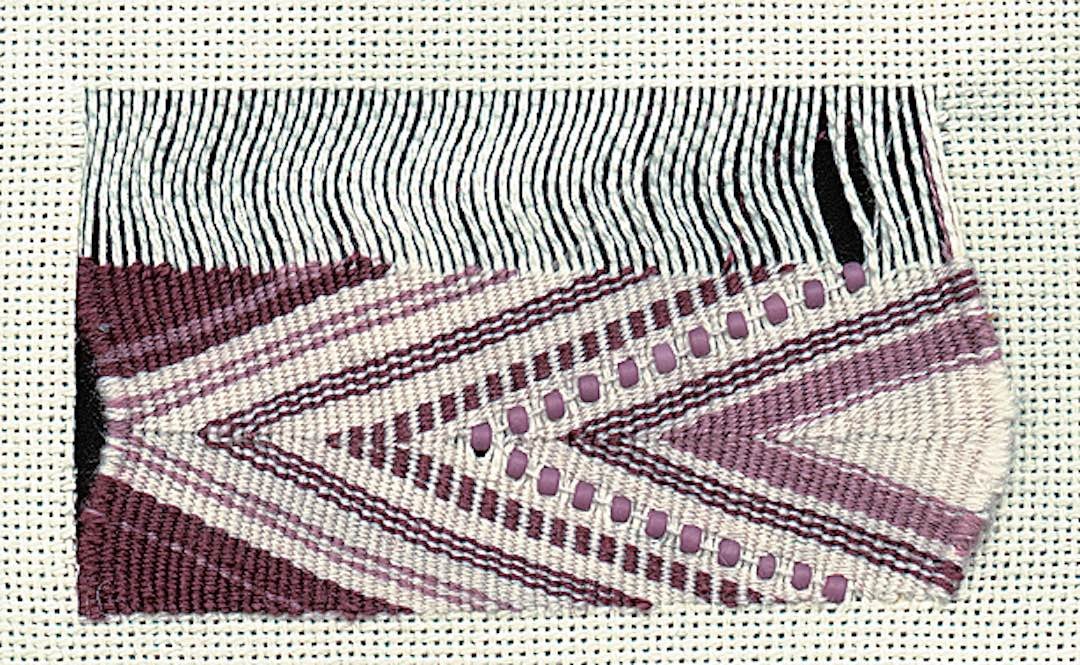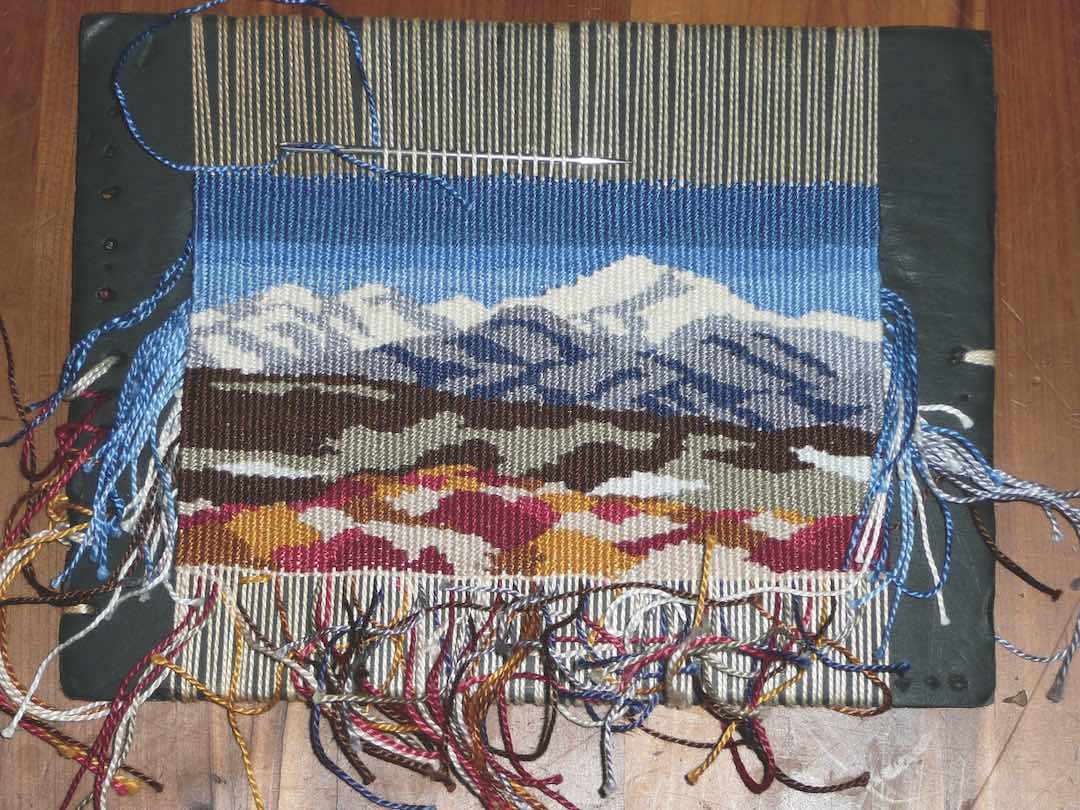I love tapestry weaving for so many reasons. It allows you to paint with yarn, mixing colors as easily as a painter mixes oils on a palette. You can create depth and wonder in a flat surface, or add techniques such as soumak and pile that make your surface not-so-flat. Tapestry can be almost photo-realistic, or it can be deeply evocative with the simplest shapes. You can weave tapestry on a fancy tapestry loom, on a simple wooden, copper, or PVC frame, or on a piece of cardboard. Tapestry weaving is easily portable, if you're not making an epic piece, and it gives the slow-weaving, fingers-in-the-warp, tactile satisfaction that I love.
Tapestry-loom weaving patterns and tips in this free eBook cover a lovely array of weaving styles. Here's a sneak peak at what you'll find inside.
Learn How to Make a Hanging Wall Tapestry
 Photo credit: Joe Coca
Photo credit: Joe Coca
Geometry Man Tapestry by Karen Donde Karen stumbled upon this design while designing a sample for her Certificate of Excellence. She was arranging random geometric shapes in her design software when "Geometry Man" appeared! Create your own "Geometry Man" or try out other geometric designs. Either way, this is an easy way to jump right onto the woven wall hanging trend. You'll learn to weave straight lines, curves, and diagonals, all with seamless weft joins.
Make a Tapestry Loom Stand from an Art Easel
 Photo credit: Karen Piegorsch
Photo credit: Karen Piegorsch
Set Your Body (and Your Loom) Free by Karen Piegorsch Frame looms are popular among both tapestry weavers due to their portability, low cost, and ease of warping. Commonly, the frame loom is used in the lap, balanced against the edge of a table, but this isn't very ergonomic. Learn to use a painter's box easel to make a tapestry loom stand in this article.
DIY Cardboard Tapestry Loom
 Photo credit: Sarah Swett
Photo credit: Sarah Swett
Weave a Tapestry Bag on a Box by Sarah Swett Weaving on a box is immensely satisfying. You can take your time and play with blocks of color without fancy equipment. Sarah usually recommends a small box for your first bag, but there’s no limit to the fun you can have playing with size, shape, and designs to fit the future life of the bag.
Tapestry Weaving on an Embroidery Hoop
 Photo credit: Margaret Windeknecht
Photo credit: Margaret Windeknecht
Wedge Weave in Miniature by Margaret Windeknecht This article is an introduction to a very unique adaptation of this old tapestry weaving technique Margaret calls the technique drawn-thread tapestry because it is similar to drawn-thread embroidery. It is done with cotton or linen fabric on an embroidery hoop, using cotton, silk, or wool floss wefts threaded in a tapestry needle. These miniature wedge-weave tapestries can be presented as framed artwork, dollhouse-scale handwovens, or even as small bits of jewelry.
Tapestry Postcard
 Photo credit: Nancy Taylor
Photo credit: Nancy Taylor
Postcards from the Field by Nancy Taylor If you've ever wondered how to make your own tapestry in the traditional, photo-realistic style, this is the perfect place to start. This woven tapestry project allows you to try your hand at emulating a real-life scene on a small scale. These woven tapestries are each only the size of a postcard! This is a great travel or holiday tapestry project, since it's woven on a portable tapestry loom.

